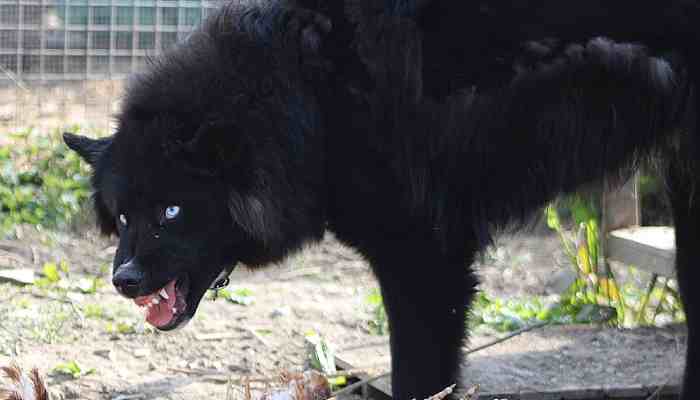Fear-based aggression in dogs is a serious issue that requires careful attention and proper handling. It is a common behaviour problem that results from a dog’s anxiety and fear response, leading to aggressive actions towards people, other animals, or objects.
Causes of Fear-Based Aggression in Dogs
Fear-based aggression can be caused by a number of factors, including genetics, early socialization, traumatic experiences, and health problems.
Genetics can be a major factor in fear-based aggression in dogs, as some breeds are more prone to this behaviour due to their genetic makeup. For example, dogs that were bred for guarding or protection may have a stronger tendency towards aggression. This does not mean that all dogs of a certain breed will be fear-aggressive, but it does increase the likelihood. It is important to note that while genetics can play a role, it is not the only determining factor, and proper socialization and training can help mitigate any genetic tendencies towards fear-based aggression. In addition, responsible breeding practices can help reduce the likelihood of fear-based aggression in future generations of dogs.
Early socialization is a crucial factor in preventing fear-based aggression in dogs. During a dog’s critical period, which occurs between 3 and 14 weeks of age, exposure to a wide range of people, animals, and environments can help them develop into well-adjusted and confident adults. Without proper socialization during this period, dogs may become fearful and anxious, leading to fear-based aggression towards people, other animals, or objects. This is because dogs who are not socialized may view unfamiliar situations as threatening, triggering their fear response and leading to aggressive behaviour. Therefore, it is important for dog owners to prioritize early socialization to help prevent fear-based aggression and ensure their dog’s well-being. This can involve exposing puppies to a variety of people, animals, and environments in a positive and safe manner, which can help build their confidence and reduce the likelihood of fear-based aggression developing later in life.
Traumatic experiences can also contribute to the development of fear-based aggression in dogs. Dogs that have experienced abuse, neglect, or a violent attack may become fearful and anxious, leading to aggressive behaviour as a protective mechanism. These traumatic experiences can create lasting emotional scars, making it difficult for the dog to trust humans or other animals. As a result, they may resort to aggressive behaviour in an attempt to protect themselves or assert control over their environment.
Health problems can also be a factor that contributes to fear-based aggression in dogs. When a dog is suffering from health issues such as chronic pain, illness or injury, they may become fearful and anxious, which can lead to aggressive behaviour as a form of self-protection. In such cases, dogs may lash out at people or other animals as they attempt to protect themselves from perceived threats or discomfort. For instance, if a dog has a long-term health condition that causes them discomfort, they may become more reactive and aggressive towards people or other animals.
Signs of Fear-Based Aggression in Dogs
Some signs of fear-based aggression in dogs include growling, barking, snapping, biting, and lunging. Dogs may also display body language cues such as raised hackles, flattened ears, and a tense body posture.
Handling Fear-Based Aggression in Dogs
Proper handling of a fear-aggressive dog is crucial in preventing further incidents and ensuring the safety of all involved.
Training: Positive reinforcement training can help a fear-aggressive dog learn new behaviours and overcome their anxiety. Training should focus on building the dog’s confidence, teaching them to relax in stressful situations, and desensitizing them to triggers that cause fear.
Management: Management strategies such as avoiding triggers that cause fear-based aggression, using a muzzle in public places, and keeping the dog on a leash can help prevent incidents from occurring.
Medication: In some cases, medication may be prescribed to help a fear-aggressive dog manage their anxiety and fear. Medication should only be used under the guidance of a veterinarian.
Fear-based aggression in dogs is a serious issue that requires proper handling and attention. Understanding the causes and signs of fear-based aggression is crucial in preventing incidents from occurring. With the right training, management, and sometimes medication, fear-aggressive dogs can learn new behaviours and overcome their anxiety, leading to a safer and happier life for both the dog and their human companions.



